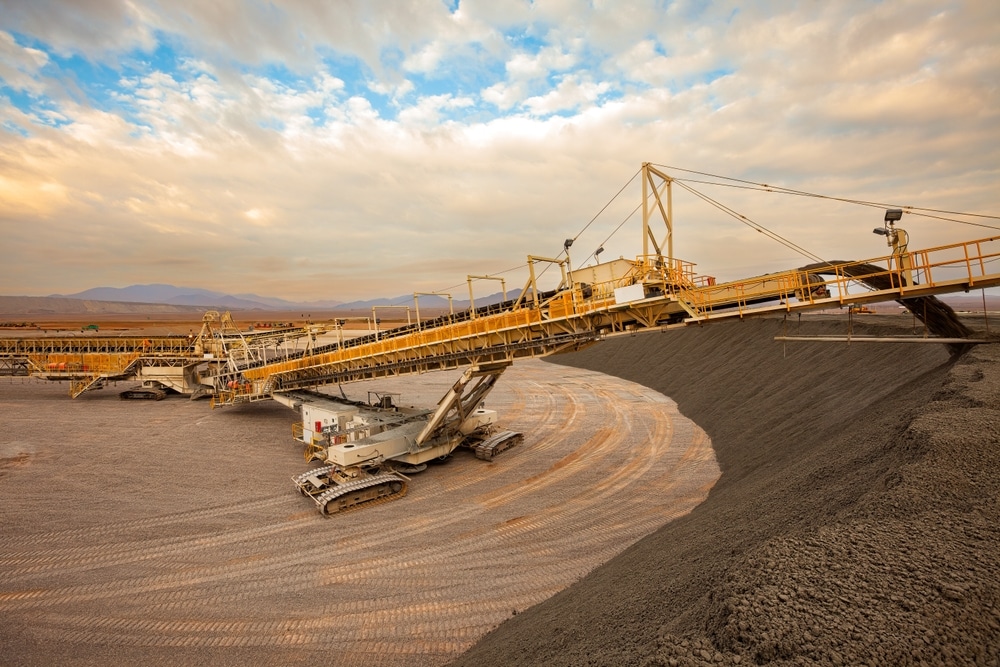Copper prices rose on Wednesday due to optimism surrounding potential U.S. interest rate cuts and the impact of a strike at the Escondida mine in Chile, the world’s largest copper mine.
Factors Driving Copper’s Price Revival
The 3-month copper contract on the London Metal Exchange increased by 0.8% to $9,026 per metric ton. This is a turn-around from the previous month’s price dropping to below the $9,000/ton threshold.
This reflects market excitement over the possibility that the U.S. Federal Reserve might shift its focus from controlling inflation to promoting economic growth. Such expectation is fueled by weaker-than-expected U.S. producer price data, which has led investors to anticipate that cooling inflation could prompt rate cuts.
The U.S. dollar index, which fell to a one-week low, also supported copper prices by making the dollar-denominated metal more affordable for buyers using other currencies.
However, gains in copper were tempered by ongoing concerns about the Chinese economy. Recent data showing that bank lending in China in July was the lowest in nearly 15 years has intensified fears of a prolonged economic downturn. This could negatively affect industrial activity and demand for metals.
Notably, a powerful workers’ union’s strike at BHP’s Escondida mine in Chile has further bolstered copper prices. The strikers aim for a bigger share of the profits from the largest copper mine in the world.
What Fuels the Copper Mine’s Unrest?
The strike raises the prospect of disrupted production at a mine that produced almost 5% of the world’s copper output. This strike history is marked by significant disruptions, such as the 44-day strike in 2017, which led to a spike in global copper prices after BHP declared “force majeure.”
The term indicates the company couldn’t fulfill its contracts due to the strike’s impact. Similar disruptions occurred in 2006, 2011, and 2015, with the union’s actions consistently affecting production and prices.
Three key factors enhance the union’s bargaining power:
- It represents 61% of Escondida’s workforce,
- Has substantial financial reserves to support workers during strikes, and
- Is protected by Chilean law, which prevents the company from replacing striking workers.
These reasons give the union considerable leverage in negotiations. The union, Sindicato Nro. 1, controls nearly all frontline workers at Escondida, including essential machine operators, drivers, and technicians.
BHP has attempted to restart talks, but the union rejected the latest offer, although it has indicated a willingness to resume discussions. The company has a contingency plan that allows non-unionized workers to continue operations, but the extent to which production is maintained still needs to be clarified.
A key point of contention is the union’s demand for 1% of the mine’s shareholder dividends to be distributed to workers, estimated to be around $35,000 per worker.
BHP has currently offered a bonus of $28,900, but the union is holding out for a better deal.
How Could the Strike Affect Copper Prices?
The strike’s impact on copper prices has been limited so far, mainly due to weak demand from China and hopes for a quick resolution. However, the situation could escalate if the strike continues.
Since copper price reached record highs in May at LME, it has been dropping as shown below.

Remarkably, market sentiment shows a bullish forecast for the red metal, with an expected trading range to go beyond $4.10/pound. According to Trading Economics estimates, copper prices could trade at $4.14/pound at the end of the quarter.
As negotiations between BHP and the union continue, the outcome will significantly impact global copper markets, depending on the strike’s duration and severity. This situation highlights the critical importance of mining in the global copper supply chain. Nearly 90% of the world’s copper comes from mines rather than recycled scrap.
In addition to copper, other base metals also saw gains. LME aluminum price rose by 1.2% to $2,360.50 per ton, zinc climbed by 1.5% to $2,727.50, lead advanced by 0.9% to $2,008, and tin increased by 0.9% to $31,470. However, nickel prices dipped slightly, by 0.1%, to $16,300 per ton.
The ongoing strike and potential shifts in U.S. monetary policy could play pivotal roles in shaping the global copper market’s trajectory in the coming weeks. Investors and stakeholders will be closely watching the developments, particularly as copper remains a critical component to reach the world’s net zero goal.


